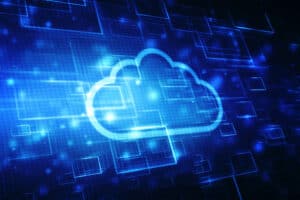
Cloud-native environments necessitate observability best practices for IT teams and businesses to make systems more efficient and proactively improve end-user experience.
As cloud computing becomes more ubiquitous in creating and delivering services, it becomes apparent that following observability best practices is not merely a matter of interest for IT teams but for businesses as a whole.
Wait, what is observability?
Observability is the ability to identify the internal state of a system based on the information/data of its external state in real time.
Observability relies on outputs generated across the system to pinpoint the proverbial needle in a haystack, so teams across various disciplines can quickly resolve the issue before it impacts end-user experience.
This blog dives deep into the various observability best practices that every organization should implement. Let’s kick off with the basics!
ABCs of Observability
As discussed earlier, it is a way to check the internal health of a system based on the many outputs generated across a multi-cloud environment.
A system is observable when these records can be interpreted to gain insights into issues down to their root causes and to resolve them thereafter without extra coding or testing, ensuring the system is efficient.
Observability has become a critical aspect of cloud-based services due to the increasing complexity of the dynamic and uniquely distributed cloud-native architectures.
However, in understanding observability, many mischaracterize observability as a buzzword for network performance management (NPM) and application performance management (APM).
Observability vs. Monitoring
Monitoring essentially allows you to preconfigure alerts about expected issues. Hence, monitoring tools function under the assumption that you already know all the problems that can crop up in the lifetime of a system.
However, cloud-based systems are dynamic, meaning it’s next to impossible to know all the issues that can arise in the pipeline with just APM or NPM.
Meanwhile, when a system is fully observable, you are instantly alerted when something is wrong. It then allows cross-functional teams to understand the issue and quickly fix it.
Further, utilizing observability best practices allow businesses and DevOP teams to detect the importance of an issue and its effect on the entire pipeline down to the end-user experience. Therefore, it helps in the judicious use of resources and time.
See also: Observability, Infrastructure Complexity, and Shifting Left
8 Observability Best Practices Every Organization Should Implement
1. Define Your Needs First
Before you approach any vendor for observability tools, know your platform. It’s essential to identify all the sources of data feeds.
This is why an audit will allow you to understand your requirements, such as at what level of your system you need observability, how extensive observability is required, and so on.
2. You Don’t Need to Monitor Everything
Cloud-native environments are becoming incredibly complex every passing day, as are the associated development practices—continuous integration and continuous development (CI/CD), agile development, multiple programming languages, and so on.
As such, it would be counterintuitive (and resource-intensive) to observe the entire system for possible faults.
The first step, a thorough system audit, is thus vital to establish the necessary data feeds or outputs and require immediate attention lest they cause system-wide impacts or affect user experience.
3. Enable SMS and Slack Alerts for Critical Errors
As an addendum to the previous observability best practices, it’s critical to ensure you don’t put observability alerts for every error that arises in the system.
Many issues flagged by such a tool will be relatively less crucial, such as system updates or patches, for which sys admins will likely already have fixes in place. Hence, alerts for those will be counterproductive.
Instead, enable alerts for errors or issues that can’t be resolved via an automated offering. This will allow DevOps teams to focus on more pressing matters, thus creating an efficient ecosystem.
4. Create a Standardized Data Logging Format
Data logging across a multi-cloud environment is essential for observability, lending greater insights into systems and possible errors. They show precisely the root cause of errors in a system and how rampant such an issue is.
However, data logs are often ineffective, perhaps due to insufficient logging or too much of it, which defeats the purpose.
Too little or too much logging leaves out context or becomes too noisy; hence, the observability efficiency is compromised. This can compound costs and efforts.
Hence, one of the observability best practices is to create a standardized data logging format to filter data at multiple levels.
This way, extraneous data can be avoided, and only logs that give information about critical issues, like unique user IDs and timestamps, are stored.
However, a logging format should also be aggregated and centralized. Data that seem irrelevant to the operations team may be useful when collated with other data feeds.
This data format facilitates cross-disciplinary collaboration, allowing more efficient data storage and system-wide insights.
5. Monitor Beyond Logs and Traces
The common wisdom is that you must monitor only logs, metrics, and traces to effectively implement observability in your system.
However, such raw telemetry from the back-end perspective can be misleading and offer a skewed picture of your system’s performance.
Thus, it’s equally vital to consider data feeds from the front-end application, that is, how your system is faring for end users in the real world.
End-user-experience information is critical for an outside-in perspective, thus eliminating any possible blind spots and directly contributing towards improving business outcomes.
6. Use Open-Source Tools When Needed
While it’s critical for businesses to bake observability into their existing instrumentation, open-source tools can make the task easier.
Open-source solutions come with a premade standard for collecting data, thus improving observability in cloud-based environments.
This further allows cross-disciplinary teams to gain a standardized understanding of a system’s internal status across multiple settings.
Organizations can also leverage real-time user monitoring to deeply understand the user experience and how every request interacts with various services along a pipeline.
This allows DevOps, SRE, and IT teams to gain insight into the full journey of a user request and overall system health.
Thereafter, they can proactively fix emerging issues before they can impact performance and user experience. It also becomes easier to recover from problem areas.
7. Adopt a DevOps Culture throughout Your Organization
In cloud-native applications, unpredictability is the name of the game, and hence, observability is key.
However, dev teams alone can’t achieve this.
You would need to adopt a DevOps culture across your organization to improve communication and collaboration between the development and operations teams.
To achieve this, you’d need to implement end-to-end responsibility, a willingness and lack of fear to fail, focus on regular improvements and customer needs, and maximal automation.
When these are achieved, and everyone in your enterprise works towards shared goals, a system can have full observability, streamlined processes, and improved efficiency.
It also allows teams to be better prepared for unforeseen issues.
8. Share Right Access Rights with the Right People
Several problem areas, such as coding issues, can’t be resolved by automation alone.
Hence, it’s vital to integrate observability into trouble ticket offerings and help desk, which ensures problems are detected and assigned to the appropriate IT staff for fixing.
Parting Thoughts on Observability
Cloud computing and related practices of agile development and CI/CD have greatly contributed to augmenting business services.
However, the increasingly complex architecture has made it much more difficult for SRE and DevOps teams to pinpoint and resolve issues.
Thus, cloud-native environments necessitate observability best practices for IT teams and businesses to make systems more efficient and proactively improve end-user experience.




























